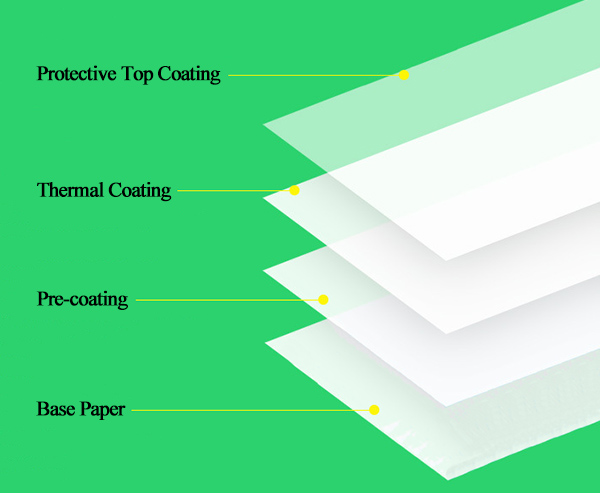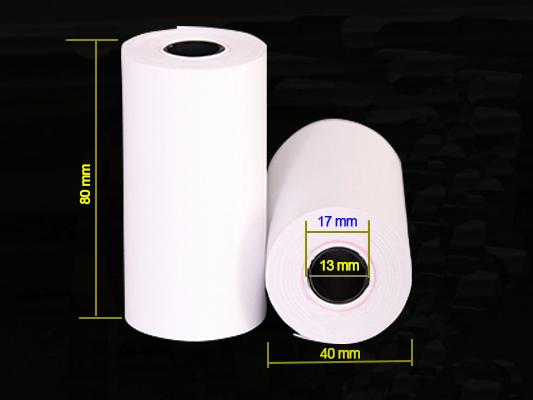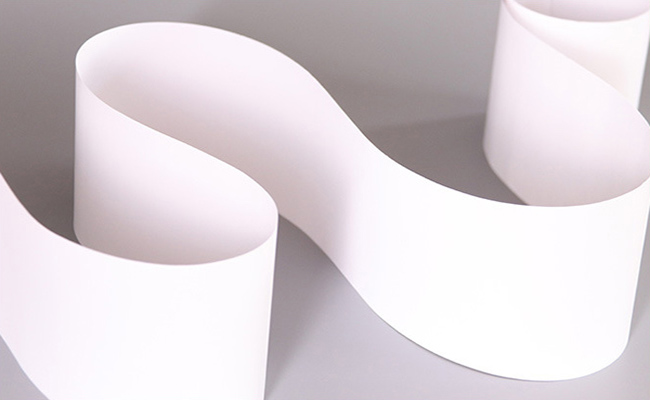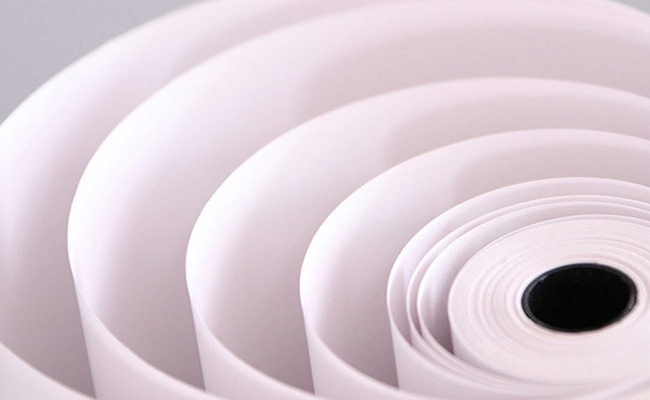Overall views
About thermal cash register paper
Thermal receipt paper has multiple layers, each designed for a specific purpose to ensure efficient and reliable printing. Here’s a breakdown of the key components.
Base Paper: This is the foundational layer made from high-quality paper or wood pulp. The base paper layer gives support and stability to the thermal receipt paper, ensuring durability and resilience during printing.
Pre-coating: This layer is applied to the top of the base layer to smoothen its surface. It is made from a blend of gelatin, starches, and alkali salts. This layer enhances the paper’s receptiveness to the sensitive thermal coating, ensuring an even and clear print.
Thermal Coating: The thermal coating is the vital component that reacts to heat. It consists of dye, which is responsible for the colour, and developers like BPA and BPS. When exposed to heat, these components undergo a chemical reaction, producing the darkened areas that form text and images on the receipt.
Protective Top Coating: Some thermal receipt papers include an additional topcoat layer. This protective layer shields the printed image from external elements such as light, water, oils, and scratches, thereby extending the longevity of the printed receipts.

How To Choose The Right Cash Register Paper?
Compatibility with Your POS System
Before making a purchase, ensure that the cash register paper is compatible with your POS system. Check the specifications of your printer to determine the required size and type of paper. Most POS systems will provide guidelines on the appropriate paper to use. Using the wrong paper can lead to paper jams, misprints, or even damage to the printer.
Printing Method
Consider how your receipts will be printed. If you use a thermal printer, thermal paper is the best choice. If your business requires multiple copies of receipts, carbonless paper might be more appropriate. For traditional printers, bond or plain paper will be necessary. Your choice of printer will largely influence your paper selection, so it's crucial to align the two.
Longevity and Storage
Evaluate how long you need the receipts to last. If you require long-term documentation, opt for bond or carbonless paper that maintains readability over time. Additionally, consider storage conditions; thermal paper should be stored away from heat and light to prevent fading. Proper storage practices can significantly extend the usability of your cash register paper.
Environmental Considerations
Many businesses are looking for sustainable options. Consider choosing eco-friendly cash register paper made from recycled materials. This not only supports environmental initiatives but can also enhance your brand image among environmentally conscious consumers. Promoting sustainability can resonate well with your customer base, making it a valuable aspect of your business strategy.






